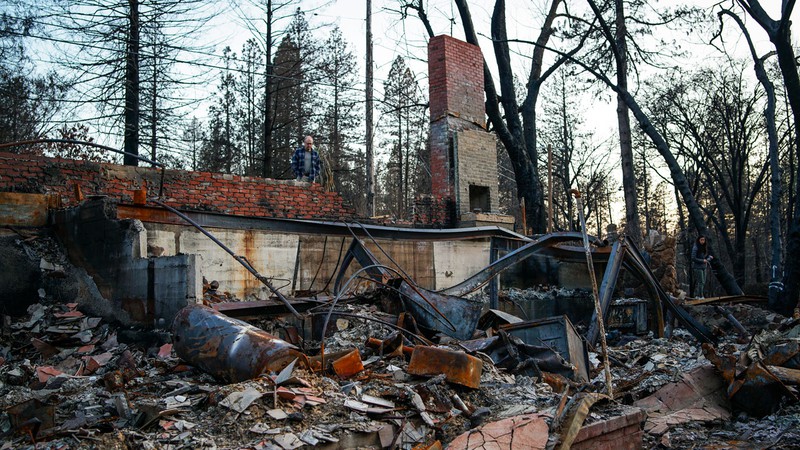Thoughtful New York Times piece looks at rebuilding efforts and if they should be occurring

Remnants of a house destroyed during the Camp Fire in 2018. M Yerman Shutterstock.com
Back in August, spurred by devastating wildfires in Maui, California Local traveled for a day to Paradise. It’s easy to come away from a visit to this Northern California town, which was destroyed by the Camp Fire in November 2018, touched by the resiliency of locals who endured a horrific ordeal and are now helping to rebuild the town.
That said, a thoughtful New York Times essay published to commemorate the five-year anniversary of the deadly fire explores the rebuild from another useful angle: Should it even be happening?
Writer Mark Arax traveled to Paradise, speaking to residents like Lenny McAfee, whose family goes back five generations in the area. McAfee is quoted as talking about the things that organizations like PG&E have done to keep Paradise from burning again, which Arax greets with skepticism, as he writes.
“I tell him I have my doubts that wildfire, a force of intricate construction, humans and nature in perfect collusion, can be so easily undone,” Arax writes.
Arax makes a similar point in reflecting on a pitch from a local official that aggressive growth will be needed to cover Paradise’s expenses in the future and that humans can learn to live with disasters rather than running from them.
“I did not challenge her premise,” Arax writes. “I did not point out that human resiliency and climate resiliency were almost always forces that worked against each other, that all the town’s federal and state and PG&E money might just be another way to put a fancy costume on human folly as it greets climate change barging through the door.”
It’s maybe not what resilient residents of Paradise would like to hear. But Arax’s message is one that might be needed.
The full article. “What Happened When California Chose to Rebuild a Town Devastated by Wildfire,” can be found on The New York Times website.